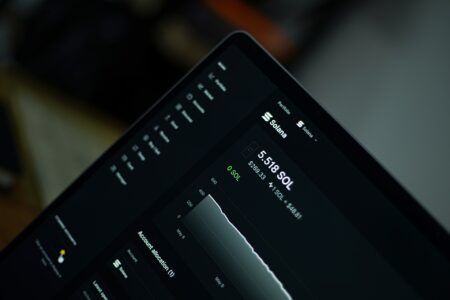A recent investigation by independent crypto researchers Hasu and Su Zhy has concluded that the Dai (DAI) algorithmic stablecoin is not an effective vehicle of high frequency arbitrage trading, and thus cannot rapidly scale. The investigation considers Dai to be less like Tether (USDT), and more like “a highly efficient, decentralized version of [crypto-lender] BlockFi.”
In Brief
Dai, also known as MakerDAO Dai, is a stablecoin pegged to the US dollar – almost. In fact, MakerDAO Dai is comprised of two separate coins: The Dai stablecoin itself, and the Maker (MKR) token, which is used for transaction fees associated with creating and burning Dai tokens (MKR also gives voting rights in the Maker ecosystem).
While not always keeping a perfect peg to $1, the Dai has overall proved to be incredibly resilient during the massive price falls of 2018, seeming to quash early fears that the coin was unstable and doomed to fail.
 (source: CryptoCompare)
(source: CryptoCompare)
Slow Cycle
But even if Dai seems to work as designed, it doesn’t really work quickly.
Aside from buying Dai tokens on the open market, the only way to get Dai is to lock up Ether (ETH) tokens (more options are planned).
But the process is heavily collateralized: To get $1 of Dai, users must lock-up $1.50 worth of Ether. And get that Ether back out of the Dai contract, users must also pay a fee in MKR tokens.
The process ultimately operates at a premium, in that it is difficult enough to break perfectly even when using Dai, let alone profit. For these reasons, Hasu and Su Zhy consider professional arbitrage categorically “impossible” for Dai. And since arbitrageurs can have no attraction to this particular stablecoin – preferring the instant, limitless liquidity of centralized stablecoins like Tether – in the authors’ opinion Dai has little potential to scale rapidly.
None of this presents a problem to the authors, however, as the Tether-like use case “was never the goal, to begin with.” Instead, the primary use cases for Dai, they argue, are long leverage, tax arbitrage, “treasury/payroll management for ICOs,” and overall “censorship resistant stability for anyone holding a volatile censorship resistant asset.”
Bullish
CryptoGlobe reported late last year on MakerDAO Dai’s growing adoption and usage, at one point growing by 50% in only two weeks and locking-up about 1.4% of the entire Ether supply.
 (source: Mkr.tools)
(source: Mkr.tools)
This trajectory has hardly changed since then, with the Ether supply committed to Dai growing by about 26% to over two million ETH. Hasu and Su Zhy believe that this growth all came from “a natural demand for debt.”









